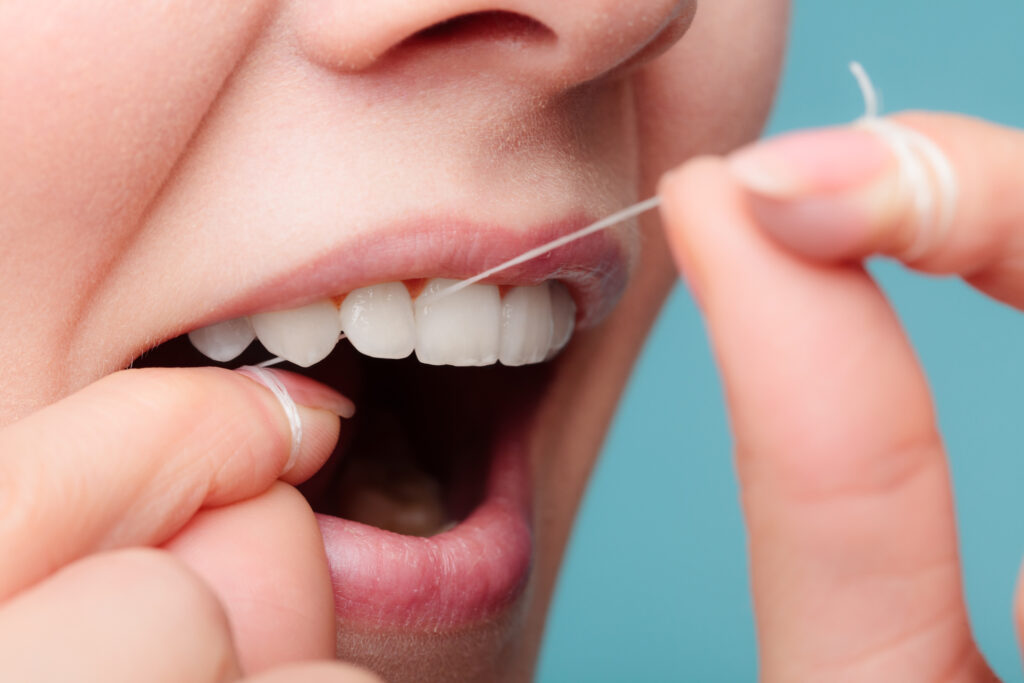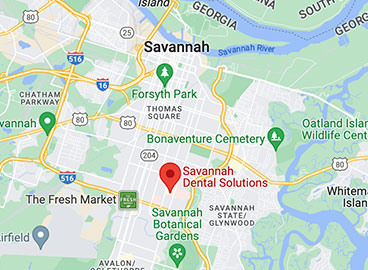Flossing is an important part of good dental hygiene. Flossing removes food particles that get stuck between your teeth, preventing them from building up and turning into plaque. One of the most common places to get cavities is between the teeth due to food getting trapped and leading to an increase in bacteria.

In order for flossing to be effective, it must be done correctly. Learning how to floss properly is something that should start in childhood when oral care is taught. It may be difficult for very young children to floss their own teeth at first and a parent may need to help. Use this guide to ensure you are flossing your teeth correctly and teaching the correct process to your children.
Flossing Step By Step
- – Break off a piece of floss that is around 18 to 24 inches long.
- – Wrap the floss around the middle fingers of both hands, leaving between 1 and 2 inches of floss between your fingers.
- – Hold the floss with your index fingers and thumbs so that it is tightly stretched between your hands.
- – Gently slide the floss in between two teeth.
- – Move the floss up and down, sliding it against the sides of both teeth. Avoid pushing the floss too hard against your gums.
- – Curve the floss around the base of each tooth to reach more of the surface of the tooth under the gum line.
- – Repeat steps 4-6 using a clean section of floss between each tooth.
- – To floss around braces, simply thread the floss under the archwire of your braces and follow the above steps.
When is the best time to floss?
It is best to floss your teeth before you brush. Flossing dislodges food and plaque so that it can be more effectively brushed away by your toothbrush. If you brush first and then floss, the food particles and plaque will remain in your mouth until the next time you brush.
How often should you floss?
It is recommended that you floss your teeth once a day and brush twice a day. It doesn’t really matter what time of day you floss, but flossing at night followed by brushing allows you to go to bed with a cleaner mouth. When food and plaque sit on your teeth overnight, that is when the greatest risk of decay occurs.
What type of floss should you use?
There’s no perfect type of floss for everyone. There are different types of floss that offer different benefits. Here are some of the types of floss available.
- – Standard floss: a thin string of nylon that fits between most teeth. It comes unwaxed or waxed, though the wax allows it to more easily slide into tight spaces between teeth. Some types of floss come flavored.
- – Dental tape: a wider string of nylon that is flat like a ribbon. It is effective for wider gaps between teeth or around braces.
- – Super floss: consists of 3 parts, a stiffened threading end, spongy floss, and regular floss. Super floss is ideal for getting around dental work like bridges and orthodontic appliances.
You can choose the right floss for you based on your unique needs. If you have trouble flossing around certain teeth your dentist may recommend a different type of floss to help you reach problem places.
Get Flossing Tips From Savannah Dental Solutions
If you have any questions about proper flossing techniques, ask your dentist during one of your regular dental checkups at Savannah Dental Solutions. If you’re looking for a children’s dentist in Savannah, GA, Savannah Dental Solutions is a family dental practice specializing in both pediatric and adult dentistry.
Call (912) 354-1366 today or contact us to schedule an appointment. We look forward to helping you and your family develop good oral hygiene habits.


